In late October 1983, the Caribbean went hot; much hotter than usual. Grenada, a postcard island with beaches, nutmeg fields, and a strategic runway under construction, had just spiraled into chaos. A Marxist government split, Prime Minister Maurice Bishop was executed by hardliners, and a Revolutionary Military Council seized power.
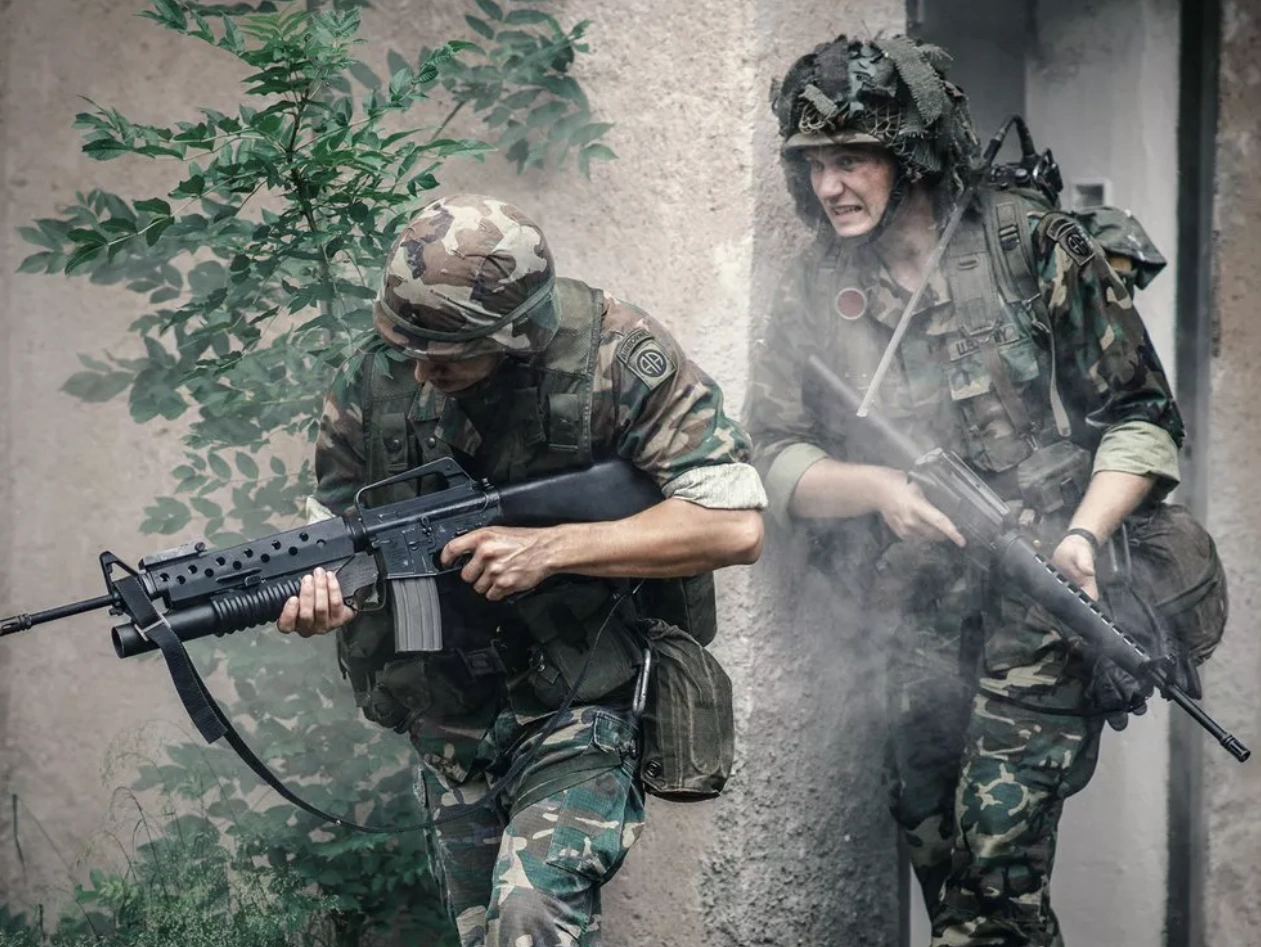
Operation Urgent Fury Unfolded Amid Chaos in Grenada
Nearby governments understandably panicked. Washington, worried about the hundreds of American medical students on the island and the runway’s potential value to Soviet-aligned Cuba. On October 25, President Ronald Reagan sent in the troops.
The operation had a bold name—Urgent Fury—and a simple brief: rescue the students, stabilize the island, and restore legitimate authority. Simple on paper. In practice, it would expose the fractures inside America’s joint war machine and force a generational fix.
The opening act fell to Special Operations units and the Marines. Navy SEALs attempted night insertions through heavy seas, and several operators were lost before they ever saw land. It was a gut-punch reminder that the ocean kills casually. Other SEAL elements and Marines linked up to protect Governor-General Paul Scoon, the Queen’s representative, who was pinned down in his residence.
Meanwhile, Army Rangers, the 1st and 2nd Battalions, jumped onto Point Salines airfield in the south. It was far from the ideal airborne field manual scenario; it was a runway under construction, littered with obstacles and watched by Cuban engineers and Grenadian troops who were far more ready to fight than the pre-invasion estimates suggested.
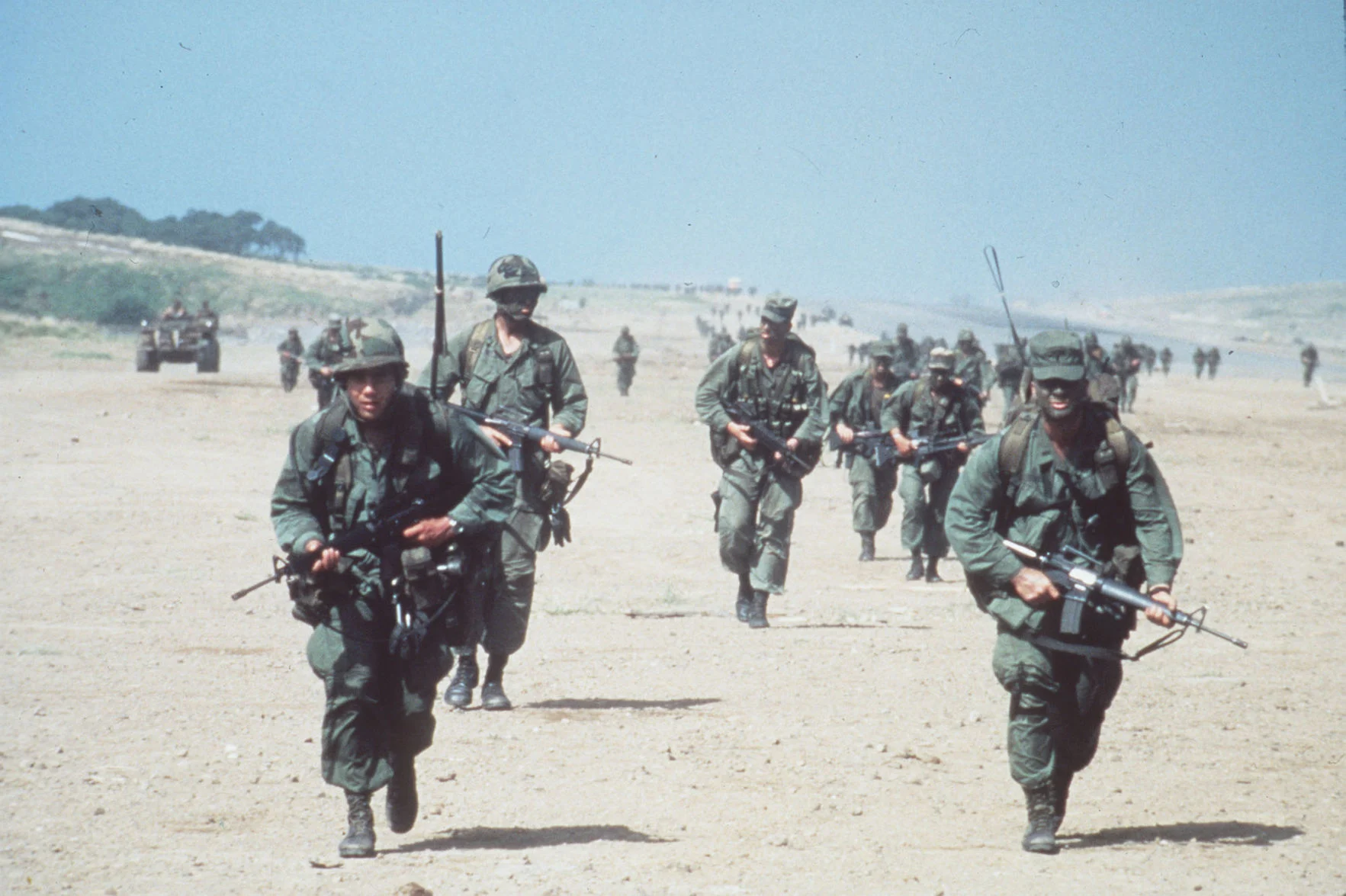
The Rangers went anyway, under the cover of AC-130 gunships. They secured the runway and held it while Air Force transports brought in more Rangers and heavy equipment. In the east, Marines from the 22nd Marine Amphibious Unit pressed toward Pearl’s airfield, cutting through roadblocks and small pockets of resistance.
Combat on Grenada looked like a mashup: jungle edges, hilltop fortifications, and sudden ambushes from troops who knew the terrain. There were skirmishes around Fort Frederick and Richmond Hill, bursts of anti-aircraft fire that chewed at low-flying helicopters, and tense building-to-building sweeps to find and evacuate students from St. George’s University. The students’ campus wasn’t a fortress, but it wasn’t a gimme either; some were scattered in compounds and dorms, and moving them safely through active fighting took hours of coordination under fire.
Operation Urgent Fury Exposed U.S. Military Flaws
Urgent Fury was a win measured in hours and days. American and Caribbean coalition forces seized key terrain fast, rescued more than 600 U.S. students, and toppled the junta. But the operation also became a case study in the cost of improvisation. Inter-service communications were a mess.
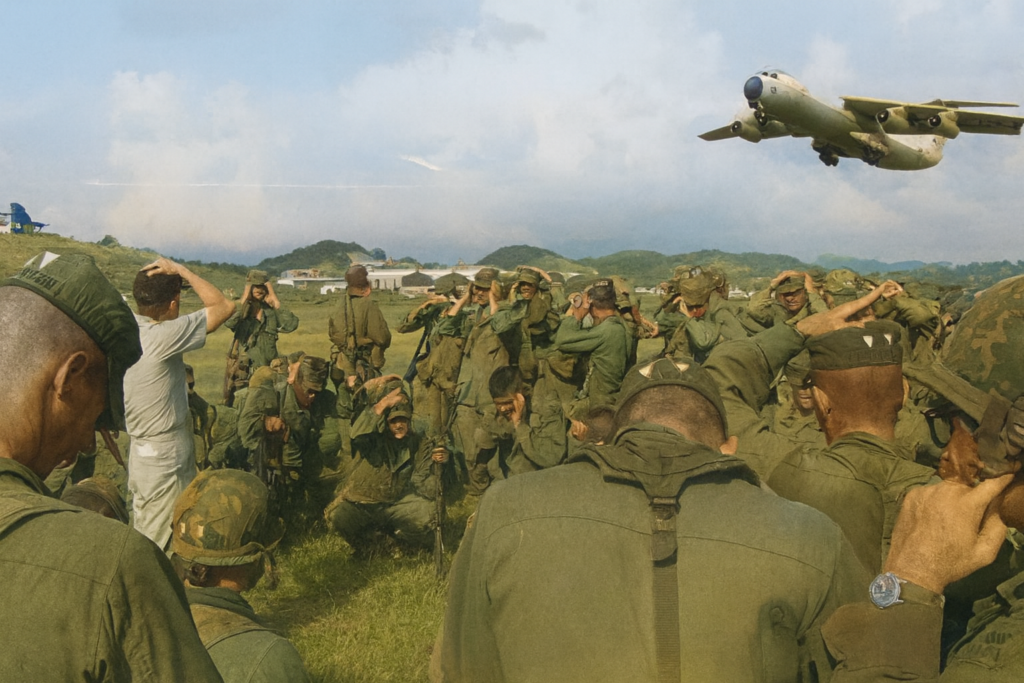
Units literally used tourist maps ripped from guidebooks. Some aircraft couldn’t talk to the ground. Different services carried radios that didn’t share frequencies. In a fight where minutes mattered, that friction got people hurt. There were friendly-fire incidents and tragic civilian casualties, including mistaken strikes that hit non-combatants. The price for a fast victory was paid not only in American blood—19 U.S. service members were killed and over a hundred wounded—but by Grenadians and Cubans caught in the crossfire.
If that sounds like an indictment, it’s really an origin story. Grenada didn’t just rescue students; it rescued the U.S. military from the bad old days of “everyone brings their own playbook.” The after-action autopsies were brutal and honest. Commanders demanded interoperable radios, shared planning, standard maps, and a single chain of command that could actually command.
These lessons fed straight into the Goldwater-Nichols Act of 1986, which rewired the U.S. defense establishment for joint operations. The law made combatant commanders king in their theaters, elevated joint education, and made careers hinge on joint experience. If you’ve watched how the U.S. fought its wars since—Panama, the Gulf War, Afghanistan, Iraq—you’re seeing the shadow of Grenada in every synchronized air-ground push and every clean handoff between services.
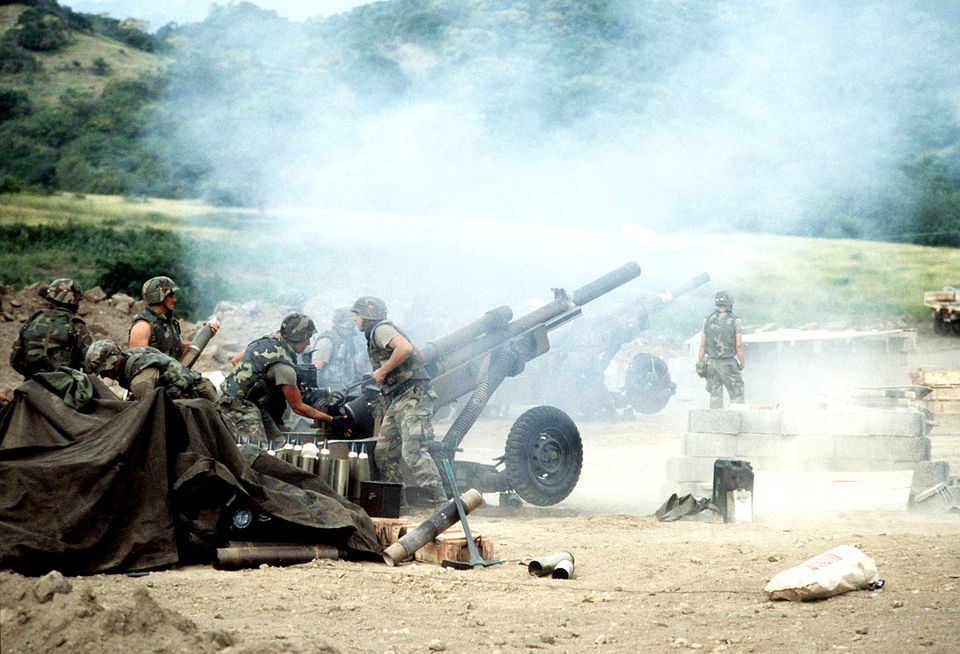
Operation Urgent Fury Left a Lasting Impact
There’s another thread worth pulling: special operations. The attempt to insert SEALs through rough surf, the reliance on AC-130s for precision fires, the use of Rangers to seize an austere airfield weren’t one-off stunts. They were a preview of a military that would increasingly lean on SOF for the hardest first hours of a crisis.
Operation Urgent Fury stressed those units brutally and revealed gaps in gear, training, and mission prep. The fixes helped shape the modern Special Operations’ community, from better insertion planning and survivable comms to an institutional understanding that “special” doesn’t mean “separate.”
Strategically, the operation sent a political message. The U.S. proved it would act quickly in its own neighborhood to protect citizens and stabilize a failing state aligned with Soviet-Cuban interests. The Caribbean peacekeeping partners—small states with small militaries—showed that coalitions aren’t just big-power toys. And for Grenada, the aftermath meant elections in 1984 and a return to a constitutional path.
Critics called Urgent Fury a “small war.” They accused the Reagan administration of picking an easy fight after the trauma of Beirut, where a suicide bomber had killed 241 American service members just days earlier. Supporters pointed to the very real hostages-in-waiting at St. George’s and to the fresh corpses left by the junta as proof that inaction wasn’t some morally superior option.

The truth, as usual, lives in the details. Grenada was both a modest military contest and a serious logistical, political, and joint-command challenge. The Americans arrived with overwhelming capability and uneven preparation; they left with the students, the high ground, and a binder of hard lessons written in red ink.
If you study modern American operations, you’ll notice that Grenada keeps popping up—not for its scale, but for its fingerprints. A single airfield taken at night by Rangers. Marines securing a coast while airborne soldiers punch inland. Precise fire from AC-130s as helicopters move shooters across a small battlespace. A coalition flag flying beside Old Glory. A quick fight that forces a long conversation about how to fight better next time. That is the real legacy of Urgent Fury: not just the dramatic rescue and the toppled regime, but the professional humility to admit what broke, fix it, and carry those fixes forward.
It’s tempting to remember Grenada as a tidy, four-day victory on an island paradise. Veterans know better. It was loud, confusing, and costly in ways that don’t make highlight reels. And yet it mattered. Students went home. A dictatorship collapsed. The U.S. military learned to speak with one voice. It’s a big footprint for a so-called “small war.”
Read About Other Battlefield Chronicles
If you enjoyed learning about the Operation Urgent Fury, we invite you to read about other battlefield chronicles on our blog. You will also find military book reviews, veterans’ service reflections, famous military units and more on the TogetherWeServed.com blog. If you are a veteran, find your military buddies, view historic boot camp photos, build a printable military service plaque, and more on TogetherWeServed.com today.
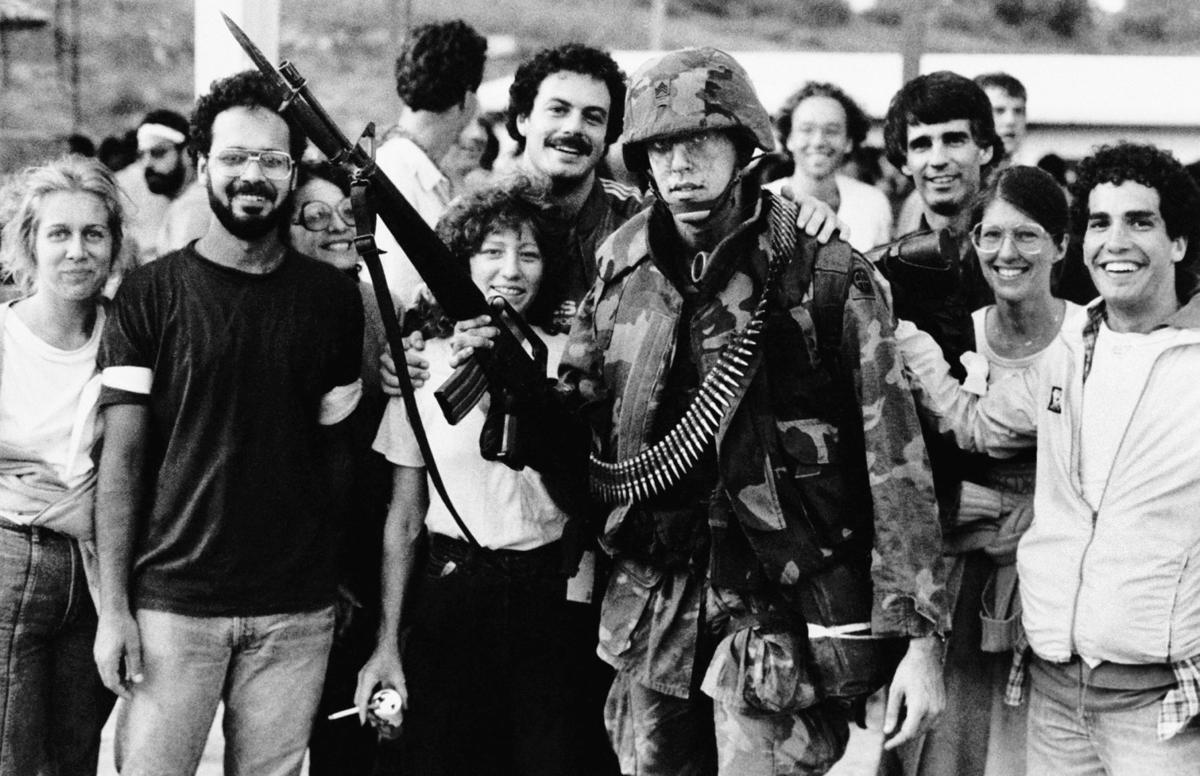
0 Comments